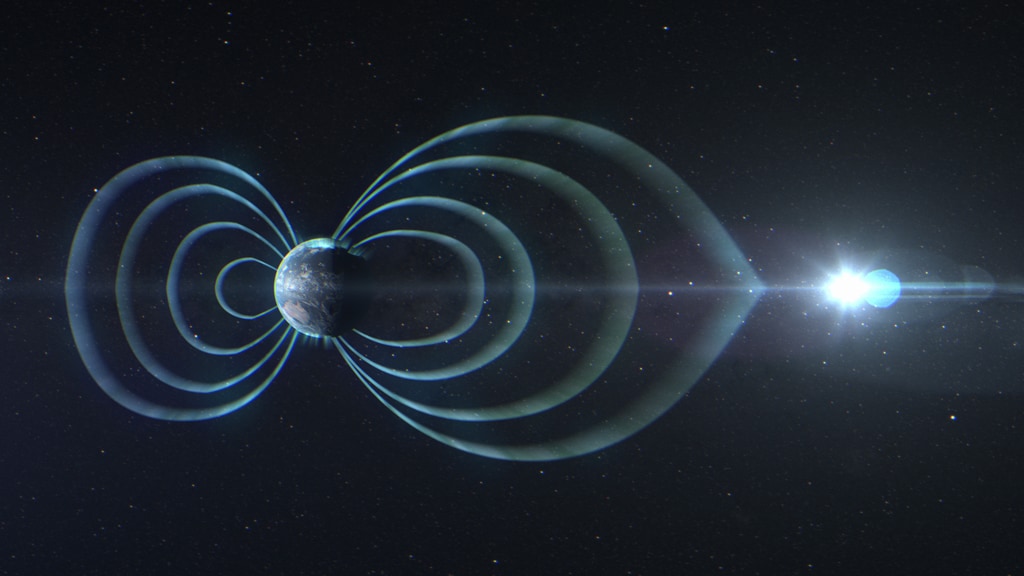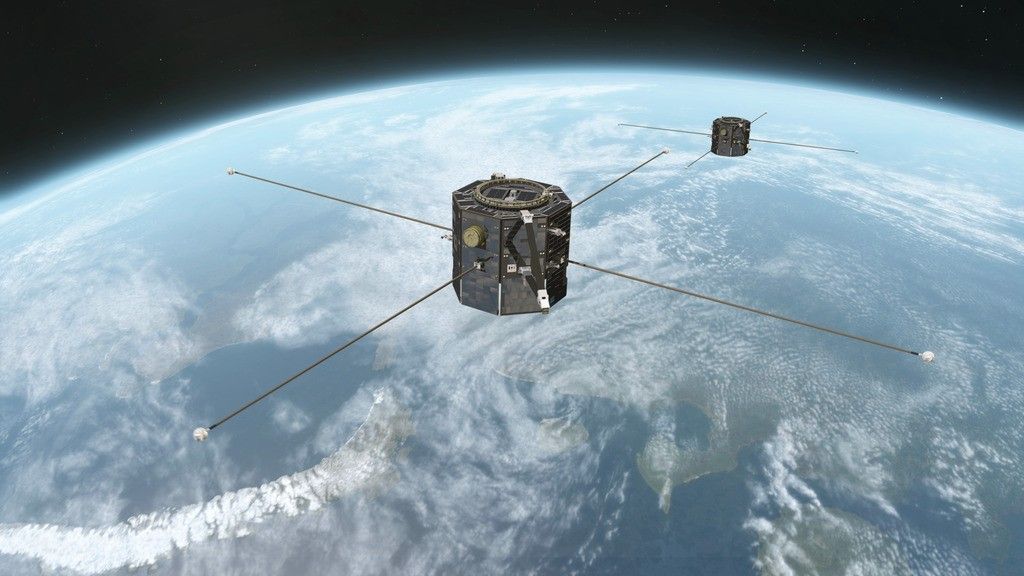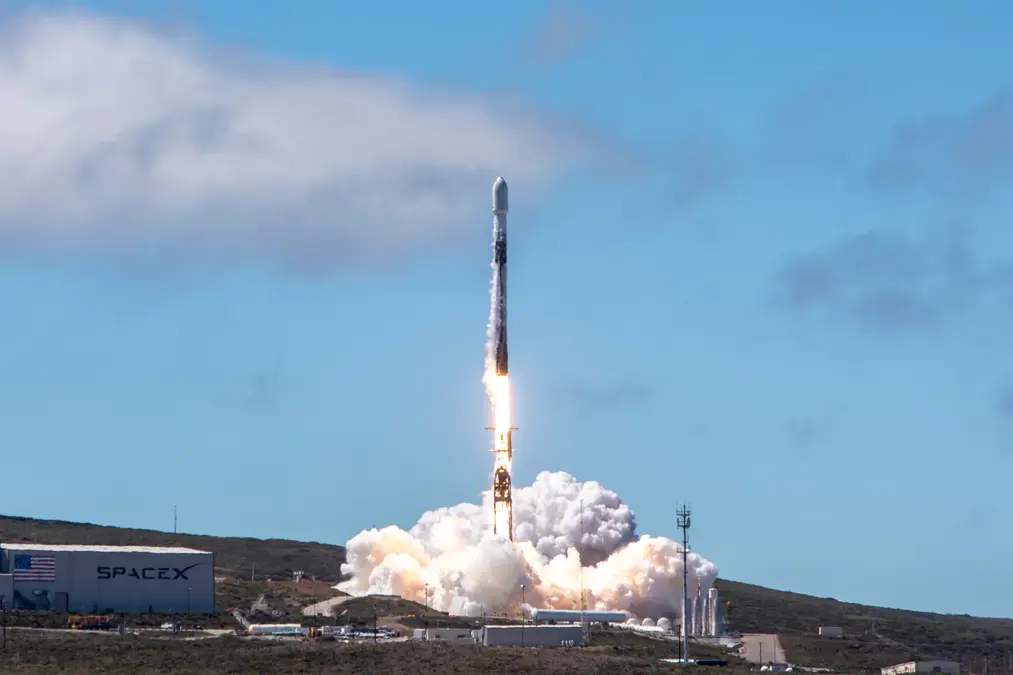NASA TRACERS mission (Tandem Reconnection and Cusp Electrodynamics Reconnaissance Satellites) successfully launched on July 23, 2025, at 11:13 a.m. PDT (2:13 p.m. EDT) aboard a SpaceX Falcon 9 rocket from Vandenberg Space Force Base in California.
The NASA TRACERS mission had initially been delayed on July 22 due to a regional FAA range issue caused by a power outage in Santa Barbara, but hardware remained ready for the adjusted launch window.
🌌 What Is NASA TRACERS Mission Really Studying?
NASA TRACERS Mission 2025 isn’t just another space experiment — it’s a frontline defense strategy against solar storm threats. These twin satellites are on a mission to study one of the most mysterious and explosive events in our solar system: magnetic reconnection.
🚀 As TRACERS explores solar wind interactions with Earth’s magnetosphere, missions like SpaceX’s Mars Mission 2026 aim even farther—towards understanding how space weather may affect deep-space travel to the Red Plane
🔥 What is Magnetic Reconnection?
Magnetic reconnection is a powerful cosmic event where the Sun’s magnetic field violently collides with Earth’s magnetosphere, unleashing bursts of radiation and energetic particles. These eruptions can travel at near-light speeds, triggering sudden space weather storms that directly impact our planet.

⚠️ Why Does It Matter?
These magnetic explosions can cause serious disruptions in our everyday lives by interfering with:
- 🛰️ Disrupted GPS signals – affecting navigation for flights and personal devices
- 📡 Communication blackouts – due to charged particles bombarding satellites
- 🔌 Power grid fluctuations – risking blackouts and transformer damage
- 🌐 Satellite system failures – like we saw during the Solar Storm 2025, which severely impacted airline routes and agricultural data networks
NASA TRACERS mission satellites will now orbit Earth’s magnetic boundary, precisely where these reconnection events occur, giving scientists an unfiltered view of how space storms begin and spread.
🌌 While TRACERS investigates the charged particles around Earth, other groundbreaking studies like Dark Matter Detection push the boundaries of invisible cosmic phenomena influencing the universe.
🛰 Mission Purpose & Scientific Goals
The mission comprises two identical satellites, each about the size of a washing machine (~200 kg), flying in Sun-synchronous low Earth orbit through the polar cusp regions—where solar wind directly interacts with Earth’s magnetic field. Over its 12-month primary mission, NASA TRACERS mission will perform 3,000 magnetic reconnection “passes”, flying 10 to 120 seconds apart to capture precise snapshots of dynamic plasma interactions.

🔍 Why the Polar Cusp?
The polar cusp is a weak spot in Earth’s magnetic shield—located near the North Pole—where the planet’s natural defenses are at their thinnest. It’s one of the very few regions where charged particles from the solar wind can stream directly into Earth’s upper atmosphere.
By flying through this high-risk region, TRACERS will detect and measure:
- 📈 Shifts in Earth’s magnetic field
- ☄️ Incoming solar particles and plasma waves
- ⚡ The process of how solar energy enters near-Earth space
🔧 Instruments & Collaborations
The NASA TRACERS mission is equipped with a cutting-edge suite of six scientific instruments, built in collaboration with some of the top research institutions in the U.S.
🛰️ These instruments are divided across two identical satellites and are designed to monitor, analyze, and decode the complex behaviors of Earth’s magnetic field and incoming solar particles.
👨🔬 Developed by Leading Institutions:
- University of Iowa
- UCLA (University of California, Los Angeles)
- UC Berkeley
- Southwest Research Institute (SwRI), San Antonio
🔬 Each TRACERS Satellite Includes:
- 🧲 Magnetometers
To precisely measure fluctuations in Earth’s magnetic field. - ⚛️ Electron and Ion Sensors
To detect charged particles entering from the solar wind. - 📡 High-Frequency Wave Detectors
To capture invisible waves that transfer energy from space to Earth. - 🔍 SwRI’s ACI (Analyzer for Cusp Ions)
A specialized tool to analyze ion motions and their alignment with magnetic field lines.
🛰️ These instruments work together to reveal how space weather begins and how it can affect technologies we rely on every day.
| Launch Date | July 23, 2025 |
|---|---|
| Vehicle | SpaceX Falcon 9 |
| Orbit | Polar Cusp, Low Earth Orbit |
| Mission Duration | 12 months (primary phase) |
| Measurements Expected | 3,000+ reconnection events |
| Collaborators | NASA, University of Iowa, SwRI, UCLA, UC Berkeley |
| Secondary Payloads | Athena EPIC, PExT, REAL |
🚀 Final Thoughts
The NASA TRACERS Mission 2025 stands as a game-changing step toward exposing the hidden dynamics of Earth’s magnetic shield. As twin satellites soar through the polar cusp, they’ll capture real-time data on magnetic reconnection, space particle interactions, and solar wind energy transfer — insights that could forever change how we predict and protect against space storms.
🔍 Frequently Asked Questions (FAQ)
What is the NASA TRACERS Mission 2025?
The NASA TRACERS Mission 2025 involves two satellites studying Earth’s magnetic shield, especially magnetic reconnection events in the polar cusp region. It aims to enhance our understanding of space weather and its impact on Earth.
Why are two satellites used in TRACERS?
Twin satellites provide simultaneous, multi-point measurements of magnetic reconnection in Earth’s upper atmosphere, offering better spatial and temporal data than a single satellite could achieve.
How does TRACERS help protect Earth from space storms?
By studying how solar wind energy transfers into Earth’s magnetosphere, TRACERS helps scientists better predict geomagnetic storms that can affect satellites, power grids, and communication systems.
When and where was TRACERS launched?
TRACERS launched on July 23, 2025, from Vandenberg Space Force Base in California aboard a SpaceX Falcon 9 rocket.
Is TRACERS connected to other NASA missions?
Yes, TRACERS works in coordination with missions like THEMIS, MMS, and ICON to provide a more complete picture of space weather phenomena. It also carries secondary payloads like Athena EPIC and PExT.




